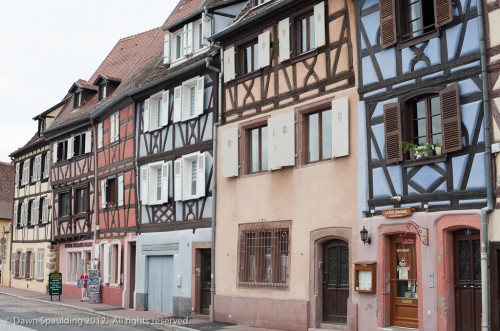
Bright houses in le Quartier de la Poissonnerie
With a population of 68,000, Colmar is largest city on the Route des Vins. It turns out fairy-tale aesthetics are scalable – Colmar is just as cute as the other villages on the road.
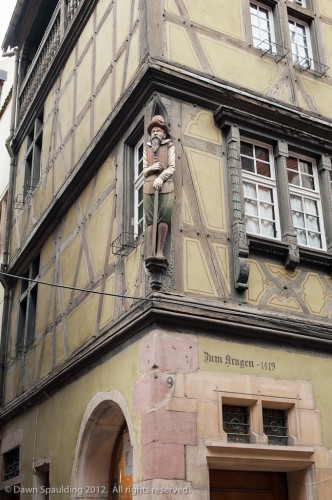
15th-century Maison zum Kragen and its merchant
The old town is beautifully maintained. It helps that the city was largely unscathed during the world wars and the French Revolution.
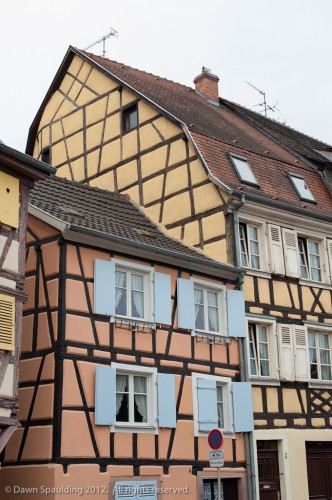
Charming buildings
Of course there are twisting lanes and colorful half-timbered houses, as well as a few churches thrown in.
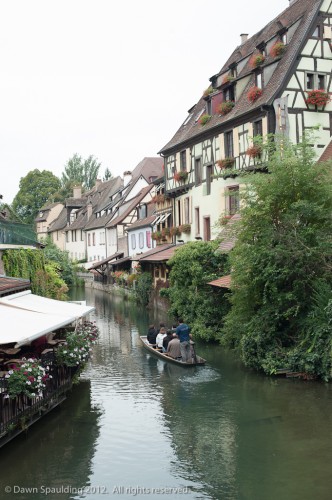
Petite Venise
The jewel here is the network of canals from the river Lauch that runs through the old butcher, tanner and fishmonger quarters. The neighborhood is now called, aptly, Petite Venise. Eye-popping houses with geraniums spilling from their windows line the canals. In the Middle Ages, rooftops along rue des Tanneurs were draped with drying hides and quai de la Poissonnerie was lined with fishermen and their daily catch.
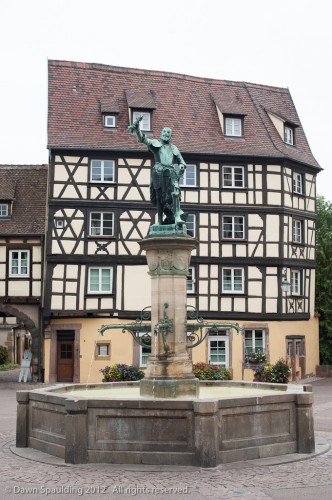
Fountain of Schwendi, who fought in Hungary and brought the Tokay vine to Alsace
One of Colmar’s notable citizens is Lazare de Schwendi, who fought in Hungary and took the city of Tokay. From there, he took the now-famous Tokay vines and brought them back to Alsace. Tokay is now known as Pinot Gris.
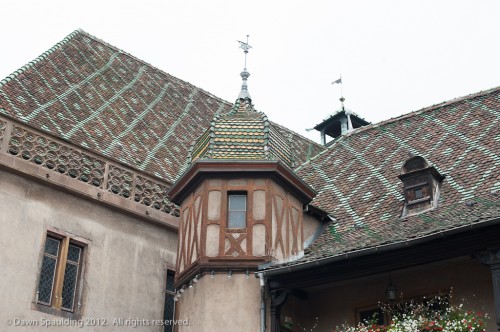
These tiles are seen all over Colmar
Colmar’s other famous citizen is Fréderic Auguste Bartholdi, who sculpted the Statue of Liberty. There is a smaller model of the famous statue on the N83, about 3 km north of Colmar’s old town.
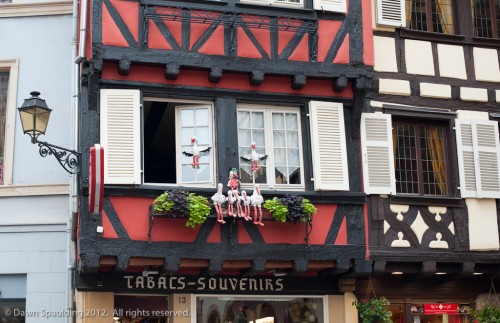
Colmar storks
Real and stuffed storks are popular Colmar sights. The elegant birds are symbols of good luck, happiness and faithfulness. The population dwindled in recent years, prompting many local efforts to save them, including establishing breeding centers where the storks can live year-round. Traditionally, they summer in France and winter in Africa. Their return to France in the spring heralds the beginning of a new season.
2 Responses to Colmar, Alsace, France